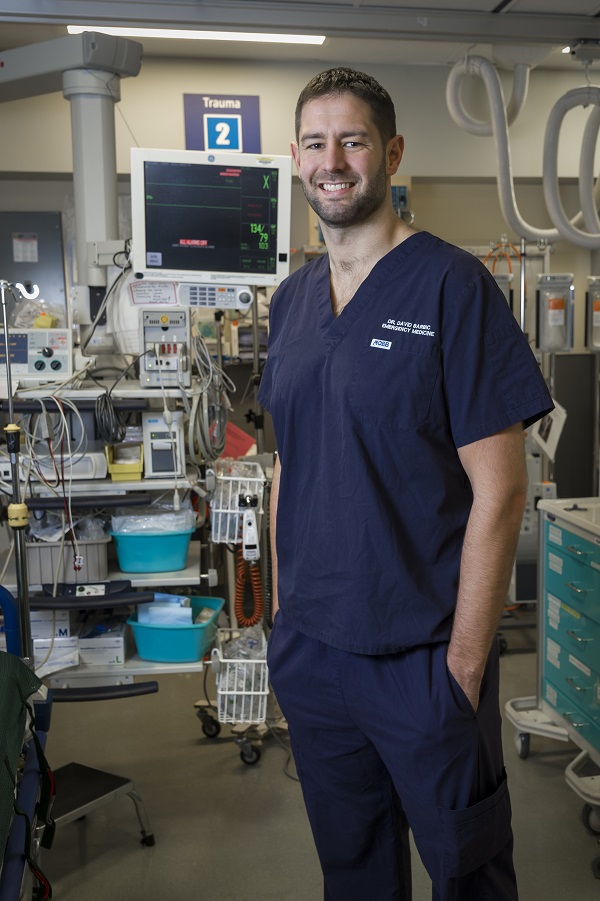By Sean Sinden
Treatment of highly agitated or violent patients in the emergency department with ketamine is more effective than traditional approaches, and could be safer for patients and staff. These results are from an innovative clinical trial led by Centre for Health Evaluation and Outcome Sciences (CHÉOS) Scientist Dr. David Barbic and published in Annals of Emergency Medicine.
The study compared the effectiveness of ketamine, a sedative, to midazolam and haloperidol, a benzodiazepine and antipsychotic combination commonly used in emergency departments in these circumstances. Midazolam and haloperidol are effective, but can increase the risk of respiratory and neurological issues.
“We see patients presenting to the emergency department agitated, aggressive, and with potentially violent behaviour every day,” says Dr. Barbic, who is also an emergency medicine physician at St. Paul’s Hospital in Vancouver. “Previous research suggested that ketamine could be quicker and safer but we needed a randomized trial to be sure.”
With support from CHÉOS Project Manager Leslie Love and Statistician Hong Qian, Dr. Barbic and his team launched the Rapid Agitation Control with Ketamine in the Emergency Department Study in the spring of 2018. The team includes CHÉOS Scientists Drs. Brian Grunau and Frank Scheuermeyer, both emergency medicine physicians at St. Paul’s, and Hubert Wong and Skye Barbic.
Over the next two years, the study enrolled 80 patients at the St. Paul’s Hospital Emergency Department who were severely agitated. Patients were randomized to receive either ketamine or the standard treatment of midazolam and haloperidol, both via injection. Patients were then monitored and underwent standardized testing, including blood screening and ECG.
The researchers were primarily looking at how long it took for patients to become adequately sedated in order to receive appropriate care, but they also looked at adverse events and the need for additional sedative medications.
“The patients who were given ketamine were sedated much faster,” notes Dr. Barbic. Their median time to sedation was almost nine minutes earlier than for patients treated with midazolam/haloperidol. Anecdotally, Dr. Barbic says this shorter time to sedation probably translates to improved safety for hospital staff and other patients.
“Patient safety is paramount in the emergency department. Any development or innovation that we can utilize to provide more effective, safer care is something worth exploring,” he says.
Unfortunately, the researchers had to stop enrollment early due to the COVID-19 pandemic so they are not able to fully compare the safety of the two medications. Although there were not enough patients to comment definitively, the researchers didn’t see a statistically significant difference in serious adverse events between the two study groups.
“We know that some emergency physicians across North America are already using ketamine as their first-line treatment in these instances but this study provides confirmation that this may in fact be a better option,” added Dr. Barbic.
Dr. Barbic was recently awarded the Grant Innes Research Paper and Presentation Award from the Canadian Association of Emergency Physicians (CAEP) for his abstract submission for this study. It was presented at the first plenary session on June 16 at the annual CAEP conference.
Sean Sinden works in Communications, Centre for Health Evaluation and Outcome Sciences (CHÉOS)


